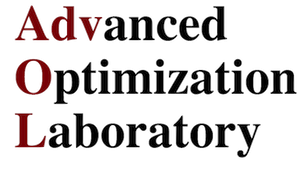| Speaker: | Dr. Bartosz Protas |
| Department of Mathematics and Statistics | |
| McMaster University |
Title: Towards a Multi-Scale Framework for Computational Flow Control and Estimation
In this talk we will discuss a range of issues related to numerical solution of optimal control and estimation problems for systems governed by the Navier-Stokes equation. The physical objective that a control or estimation strategy seeks to achieve is represented by a suitably selected cost functional which is minimized with respect to the control variable. We will first derive an optimality system and show how an optimal solution can be found in computations using a gradient-based approach. The sensitivity of the cost functional to control (i.e. the gradient) can be conveniently expressed using an adjoint field. This method is applied to the problem of wake control for drag reduction in the laminar regime. In the numerical simulations, the Navier-Stokes system and the adjoint system are both solved using a Vortex Method which is briefly outlined and benchmarked. Application of this control strategy to multi-scale systems, such as high Reynolds number turbulence, requires some form of regularization. It may be introduced into an optimization problem by modifying the form of the evolution equation and the forms of the norms, duality pairings, and inner products used to frame the adjoint analysis. Typically, L2 brackets are used in the definition of the cost functional, the adjoint operator, and the cost functional gradient. If instead we adopt the more general Sobolev brackets, the various fields involved in the adjoint analysis may be made smoother and therefore easier to resolve numerically. We will identify several relationships which illustrate how the different regularization options fit together to form a general framework. Many commonly-used strategies for regularization, including implicit Tikhonov regularization and ad hoc smoothing of the gradient with the inverse Laplacian, are shown to fit into the present framework as special cases. The regularization strategies proposed are exemplified using control and estimation problems for the Kuramoto-Sivashinsky equation and the Navier-Stokes equation in various configurations. Computational examples will be provided to exhibit utility of the presented strategies. Future directions will also be discussed.


